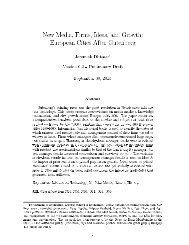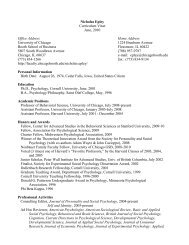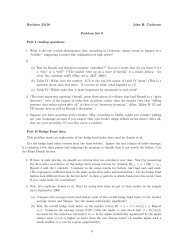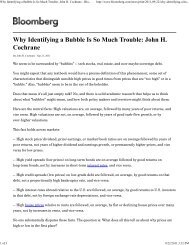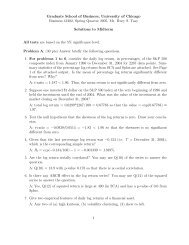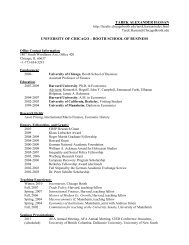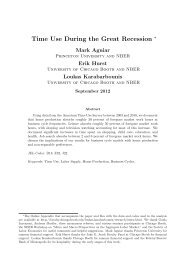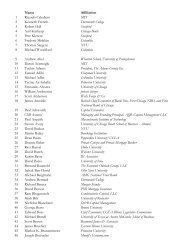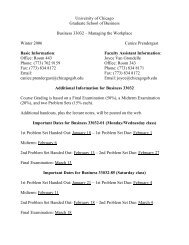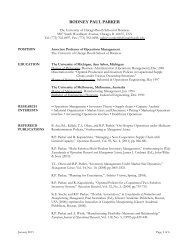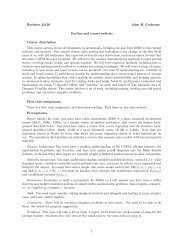by Milton Harris and Artur Raviv - Faculty
by Milton Harris and Artur Raviv - Faculty
by Milton Harris and Artur Raviv - Faculty
You also want an ePaper? Increase the reach of your titles
YUMPU automatically turns print PDFs into web optimized ePapers that Google loves.
(1971), Kh<strong>and</strong>walla (1974) <strong>and</strong> Pugh et al. (1969) all find a positive relationship between size <strong>and</strong> extent<br />
of decentralization. K<strong>and</strong>walla (1974) also documents a positive relationship between vertical<br />
integration <strong>and</strong> decentralization. Child (1973) finds that the vertical span (number of levels) of hierarchy<br />
is positively related to size.<br />
2 Model<br />
We model a firm that, for tractability, is assumed to engage in only four projects, labeled A, B,<br />
C, <strong>and</strong> D over a single period. Various subsets of these four projects may or may not interact. We<br />
denote an interaction between two projects <strong>by</strong> juxtaposing their labels, e.g., AB denotes an interaction<br />
between projects A <strong>and</strong> B. The set of feasible pairwise interactions is denoted <strong>by</strong> Ω = {AB,CD,AC,BD}.<br />
Note that we have excluded two interactions, i.e., AD <strong>and</strong> BC. This greatly simplifies the analysis <strong>and</strong><br />
reflects the idea that some interactions are a priori extremely unlikely. For example, the design of a<br />
product intended for sale in Norway <strong>and</strong> marketing of the U.S. version of the product are not likely to<br />
interact directly. Which of the feasible interactions occurs is given <strong>by</strong> an elementary event e @ Ω. That<br />
is, e is interpreted as the event that exactly those pairs of projects ω e interact <strong>and</strong> no others. Thus, for<br />
example, the event e = {AB,CD} indicates that projects A <strong>and</strong> B interact, projects C <strong>and</strong> D interact, <strong>and</strong><br />
no other projects interact. The event e = Ω indicates that all four possible interactions occurred. We<br />
refer to this event as a “company-wide” interaction. The event e = E indicates that no interaction has<br />
occurred. The set of elementary events is denoted <strong>by</strong> E = 2 Ω (the set of all subsets of Ω).<br />
To simplify the analysis <strong>and</strong> to capture the notion that some interactions tend to be similar to<br />
each other, we divide the set of feasible interactions, Ω, into two groups, P = {AB,CD} <strong>and</strong> R =<br />
{AC,BD}. For example, suppose A is production of Tide, B is marketing of Tide, C is production of<br />
Cheer, <strong>and</strong> D is marketing of Cheer. Then the above grouping reflects the assumption that interactions<br />
within a product line are similar to each other. We take similarity to the extreme <strong>by</strong> assuming the<br />
D:\Userdata\Research\Hierarchies\temp.wpd 10 February 22, 2000 (11:18AM)



